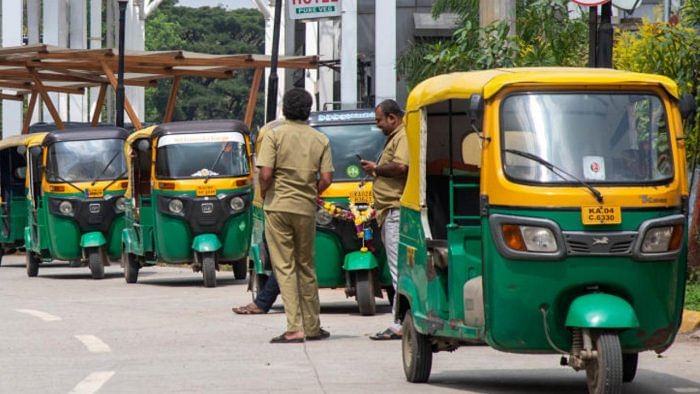
Autorickshaws are ubiquitous across India. Head to any small town, and chances are that your mode of transport from the bus or railway station will be found in a motley and raucous crowd of auto drivers vying for your attention.
The auto drivers often act as tourist guides (in Hampi), hurtling down the interior lanes of neighbourhoods in Indian cities (like Kolkatta) to local arbiters of taste (ferrying one to local eateries or souvenir shops in Agra and Jaipur).
One can easily hire an auto for a third of the price of a car in tourist destinations. In Bengaluru, like in other cities, hailing an auto via an aggregator is par for the course for beginner techies. Even the retired happily use autos for everyday use. And yet, the lowly auto has many detractors.
In general, this motorised form of public transport and its drivers are the very image of urban disorder. Typical comments include ‘auto drivers change lanes randomly, block the road, scrape cars, misbehave, risk passengers’ safety, and beat up people.’ The press typically portrays autorickshaw, bus, and taxi drivers as menacing threats to safety and public order in the city, with behaviours ranging from sexual assault to aggressive and violent behaviour. Harassment is considered the norm for daily commuters on autos. Often, the government or police organise meetings with autorickshaw unions to discipline drivers about their misconduct with passengers, flouting traffic laws, recurring strikes, and overcharging. Autorickshaw drivers themselves routinely protest against police atrocities.
And yet we know so little about the men (very rarely women) that ferry us around on the streets of Bengaluru. Apps like Uber and Ola have made the occasional human connection even more tenuous. These men work excruciatingly long hours, seldom taking more than a day off every week, if at all, so as not to compromise their daily income or their meagre leisure hours.
Many have come to the city from smaller towns. They are dealing with ingrained concepts of masculinity and patriarchy that infuse gender relations. Many of their customers are young, extremely emancipated men and women who question entrenched patriarchal societal constructs where men typically discharge responsibilities as protectors and providers. Meanwhile, these working-class men are finding it exceedingly difficult to approximate a secure economic climate when holding down even a factory or office job appears to be an impossible feat. Class, caste, and privilege are questioned in everyday interactions with customers. In Bengaluru, language is an issue that often escalates minor disagreements into conflagrations.
The popularity of the autorickshaw as a mode of transport despite pervasive discontentment with its operators has to do with the fact that it is convenient, can be hailed at any point on the road, travels through interior lanes, is not overcrowded like the bus and metro, and is more accommodating to people with disabilities.
It is very common to see passengers develop sociable relations with autorickshaw drivers as a result of repeated encounters between them, despite the unequal social conditions, education, language, and history. Many auto drivers use sociability to create social networks while collaborating with familiar strangers. While the narrative focuses on the problematic interaction and the everyday conflicts of inhabiting an auto, the reality is that for the auto driver and working-class men, the new urban infrastructures such as roads, flyovers, malls, and highways embody failed promises. While they themselves facilitate infrastructure for mobility for privileged others, they are shut out of the rewards of infrastructural developments in the city. They represent the disrupted ambitions of marginalised social groups.
Additionally, there is a general attitude towards the urban poor in India—the same attitude that takes hawkers and informal vendors out of city streets—meant to impose middle-class values of order and hygiene in urban spaces. This applies to auto drivers too. Most middle-class passengers, bolstered by a sense of class entitlement to public utility services, emphasise instead, in speech and behaviour, expressions of animosity towards the working-class auto drivers. ‘Reckless’ driving: auto operators allege that passengers pressurise them to drive fast to get to their destinations quickly. On the other hand, the younger auto driver, with his freedom to roam the city, displays middle-class ingratitude towards the working class and a tendency to wield authority over younger people.
The Bengaluru auto driver has always been a reasonably pleasant and cultured fellow. However, in the recent past, with increasing social inequalities, perceived incursions by aggregators and scooter taxis, hostile interactions with entitled customers, and a general fear of being marginalised, he has got a bad name. Sure, there are some bad apples, and behaviour can be improved. But perhaps Bangaloreans need to be more mindful of these men who ferry us around the city. The respect will certainly be reciprocated.
(The writer is an urban planner based in Bengaluru)